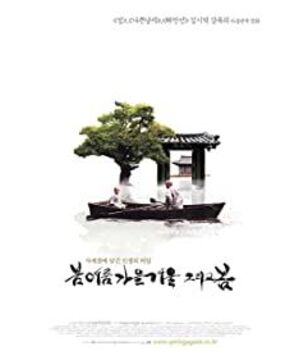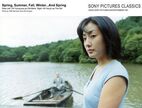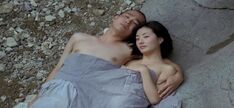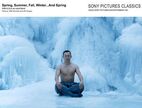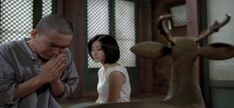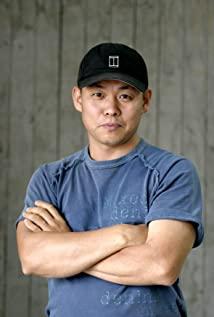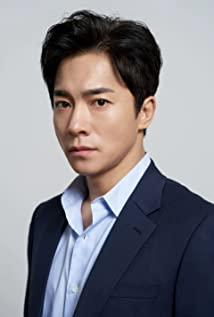Inspired by the Buddha, there is a clear distinction between good and evil, but it cannot extinguish the burning desire in the heart. Desire is the catalyst that destroys human nature. The suffering of life lies in the fact that a very holy mind at the beginning of its birth has been carved into ravines by desire, the worldly traces of sin, and the seeds of sin. Rooted deep in this dirty land and thrived. The young monk danced for the tragic murder of living beings, which was an indulgence indulging in innocence. The coitus of the snake stimulates the lust of the grown-up monk (the same scene appears in the director's other work "Love Letter to Turn Back", the one-eyed woman witnesses a pair of dogs' eroticism, which continues the lust that the director has always been keen to discuss. At this time, the arrival of the sick woman triggered a compromise between the six senses of purity and the seven emotions and six desires, which led to the monk's return to the secular world. On the surface, the Buddhist doctrine of Zen seemed to be questioned here. On the contrary, this is the inevitable process of monks' life without inspection and enlightenment. They must go through the world and test the truth in practice. The behavior of returning to secular life is a sign of stepping into the abyss of sin. After that, monks could not bear the disturbance of mundane affairs, and finally committed a heinous crime. Passion breeds possessiveness, revealing the irrepressible greed in human nature. Covetousness of voice and color, covetousness of glory and wealth, covetousness of status and power, covetousness of all the yearnings of the heart, falling straight into the abyss of desire, unable to escape. So sinking, so utter destruction, to escape the plague of desires. After the monk who killed his wife and fled back to the temple, he was frightened and frantic. He once knelt before the Buddha statue and wanted to commit suicide. The consciousness of repentance slowly emerged. At this time, the great inspirational power of spiritual belief was re-established. The humane concern of the two police officers who suddenly appeared interweaves a peaceful redemptive environment, and the monk feels guilty and serves his sentence.
Next, the master's self-immolation came abruptly, which inspired the apprentice's devotion to good deeds and chose to leave aloofly. The master has always appeared in the monk's life as a spiritual guide. At this time, his public morality was complete and he floated away in line with the flow of life. The relic left after the body was burned and a snake that swam out of the bottom of the boat during cremation continued to carry the boundless Buddha Dharma. His spiritual power, the snake lingered in the corner of the room all winter, taking the place of the master and embellishing the lonely rest of the monk's life after returning from prison.
Emphasizing from beginning to end is a kind of self-redemption to maintain faith, a kind of soul purification from the heart. When the young monk mutilated the small animals, the master watched and did not dissuade him from accusing him afterwards. Instead, he gave the young monk a kind of personal experience of empathy. Many years later, the monk who felt guilty consciously chose to tie stones to himself. The repentance method of climbing a cliff and worshipping a Buddha statue highlights the self-cultivation instilled in Buddhism, rather than general teachings. The monk's return to secular behavior has no persuasion, and the monk's reckless release, knowing the sea of suffering, is actually powerless against the sin itself. Only the conscience can save the fallen soul, and the way to save the conscience lies in the human effort. Practicing hard. If there is a prophet, the master truly understands everything.
From simplicity to complexity, and then back to mature simplicity; from sobriety to chaos, and then back to conscious sobriety, the film reveals the profound understanding and wisdom of life. No longer nakedly interrogating human nature, but integrating the natural law of the four seasons into Buddhist theory to explore the essence of life. Instinctively seeks the heavenly opportunity to treat life kindly, from the young monk to the next young monk, from the spring to the next spring, the life and the sin are endless, only the retribution should follow, the distress is self-seeking, and the sorrow and joy are mixed.
The film further visualizes the image quality of the misty and misty landscape artistic conception of "The Room of Drifting Desire". All the stories take place in a small temple surrounded by mountains and rivers far away from the hustle and bustle of mountains and rivers. The natural beauty of the four small stories of different moods of the characters are set against each other, with Zen lingering and bursts of poetry.
View more about Spring, Summer, Fall, Winter... and Spring reviews


